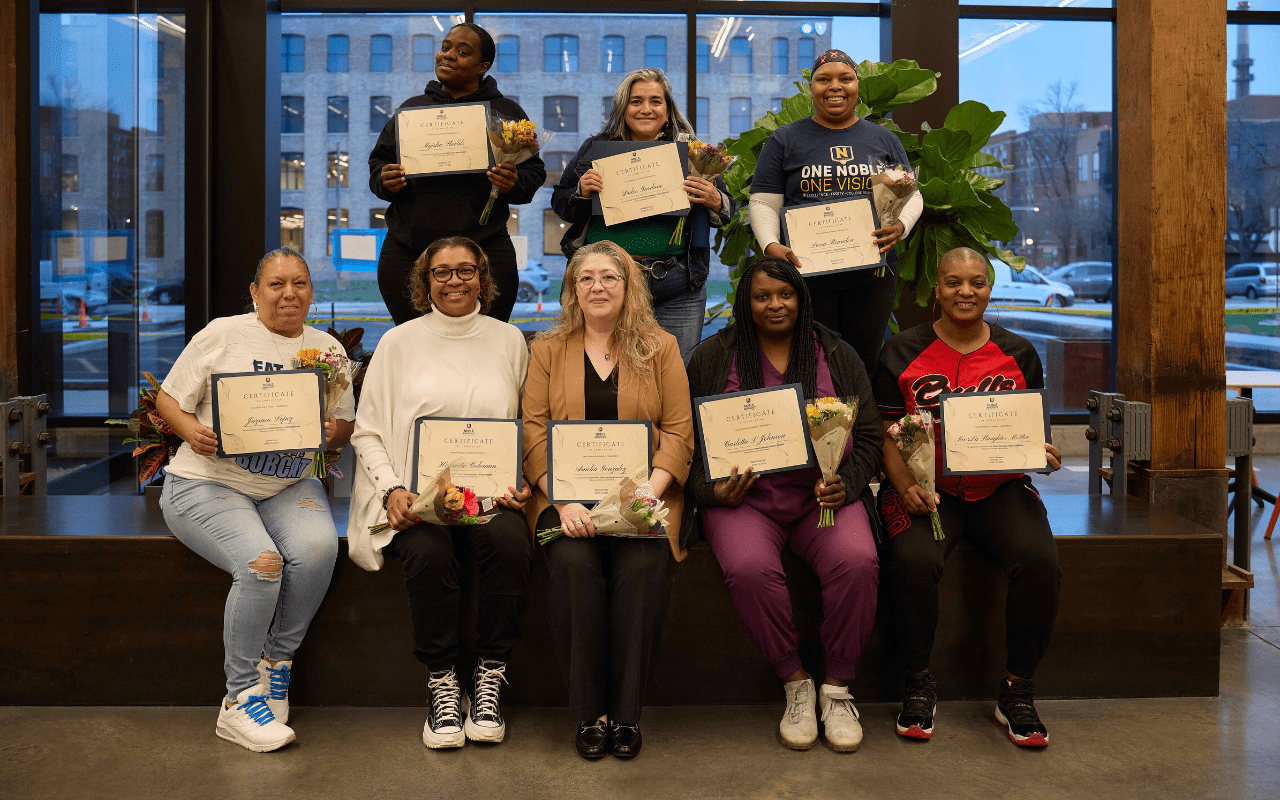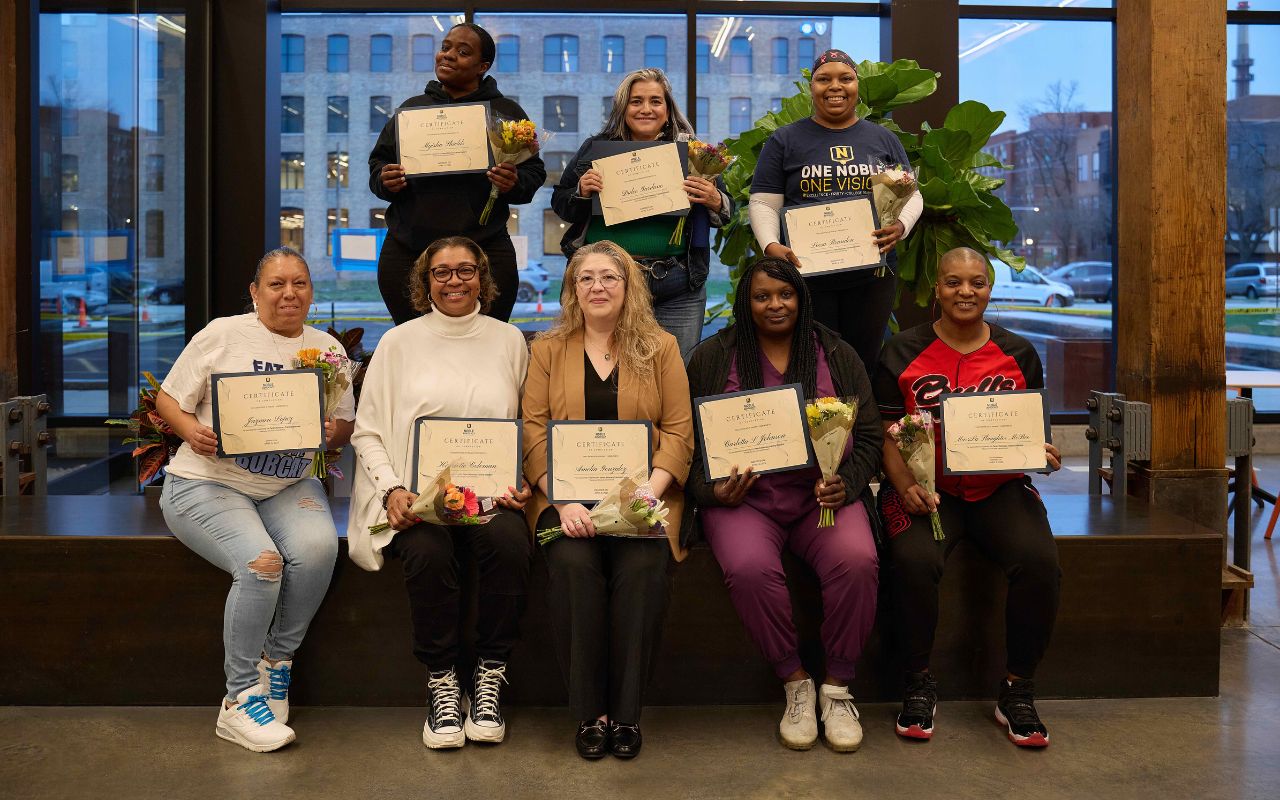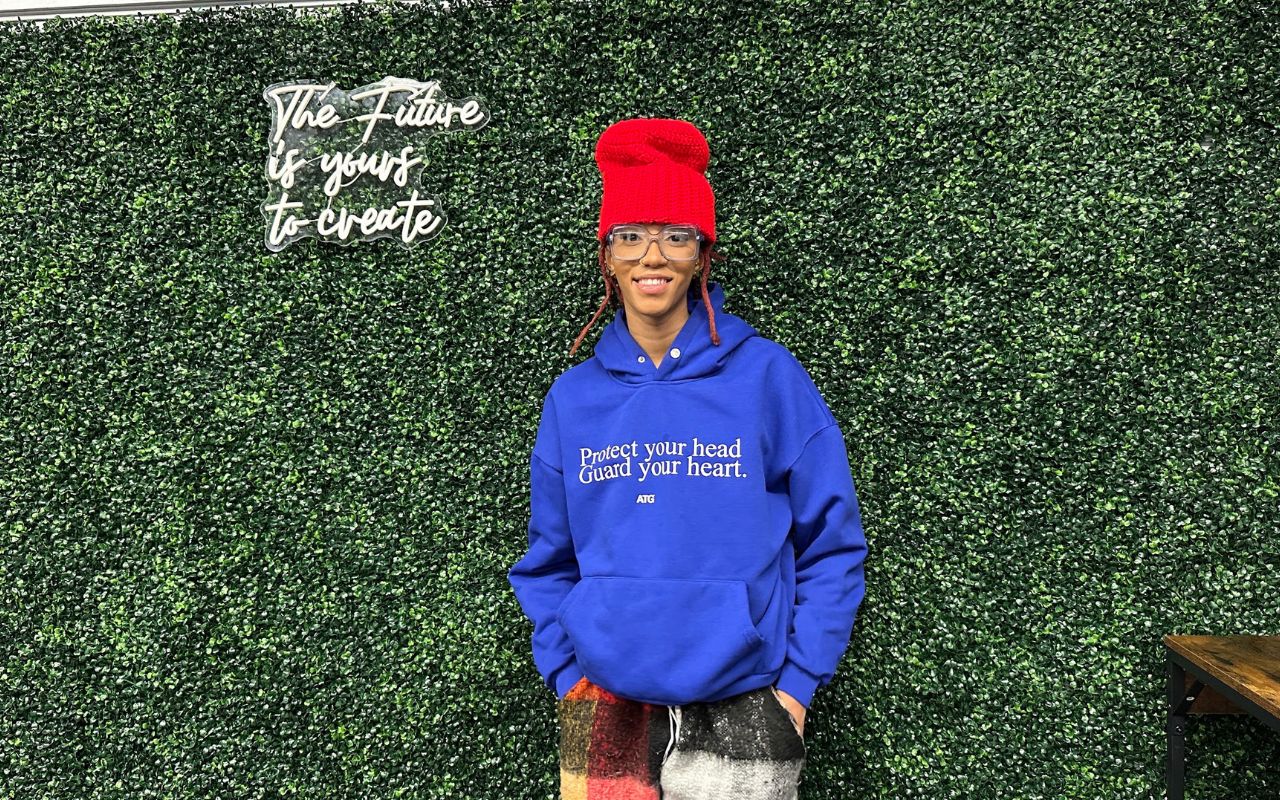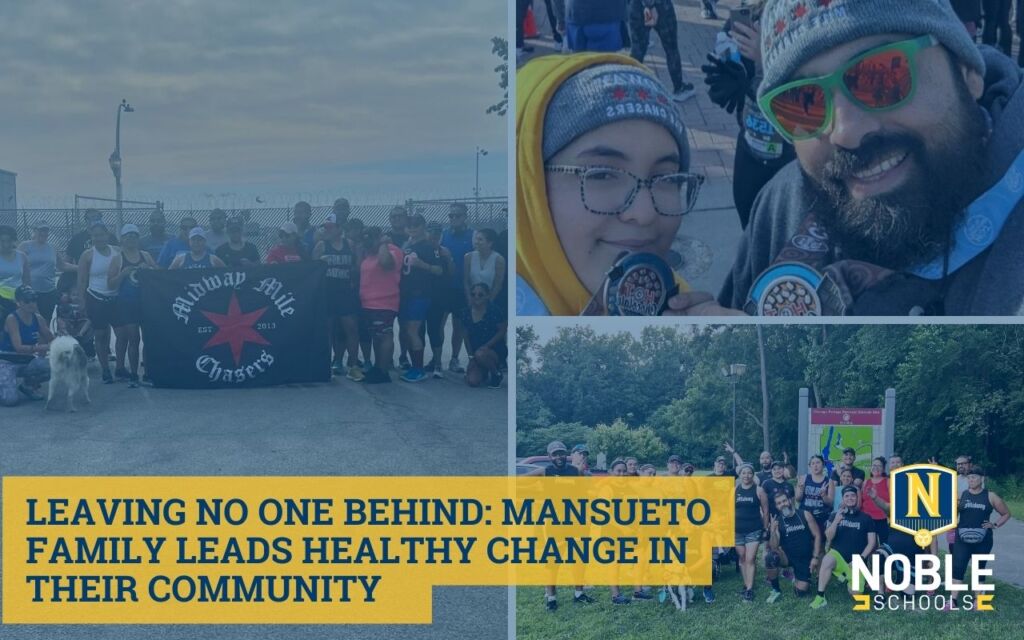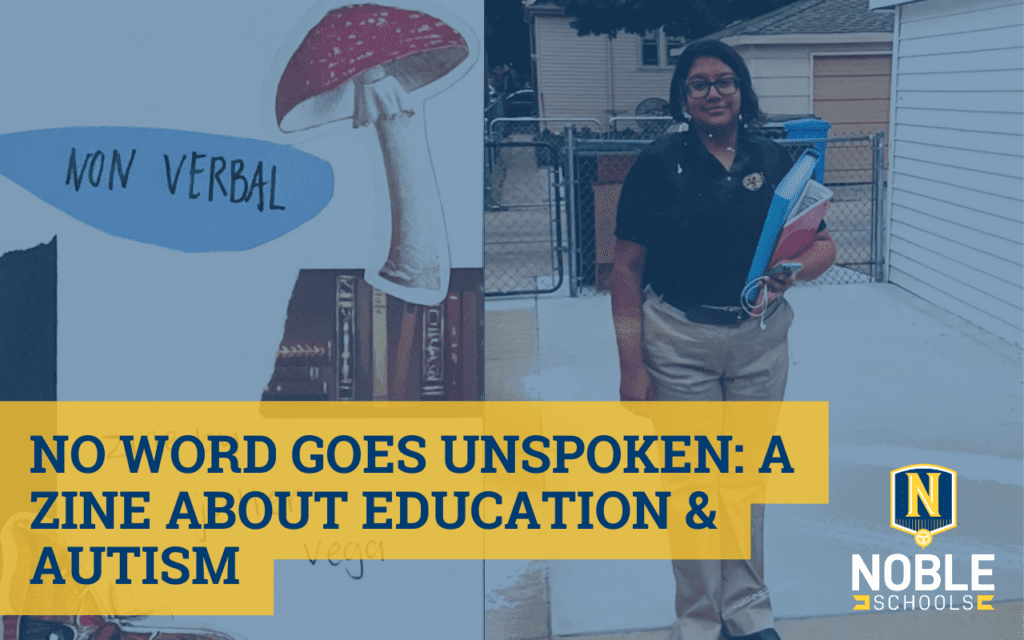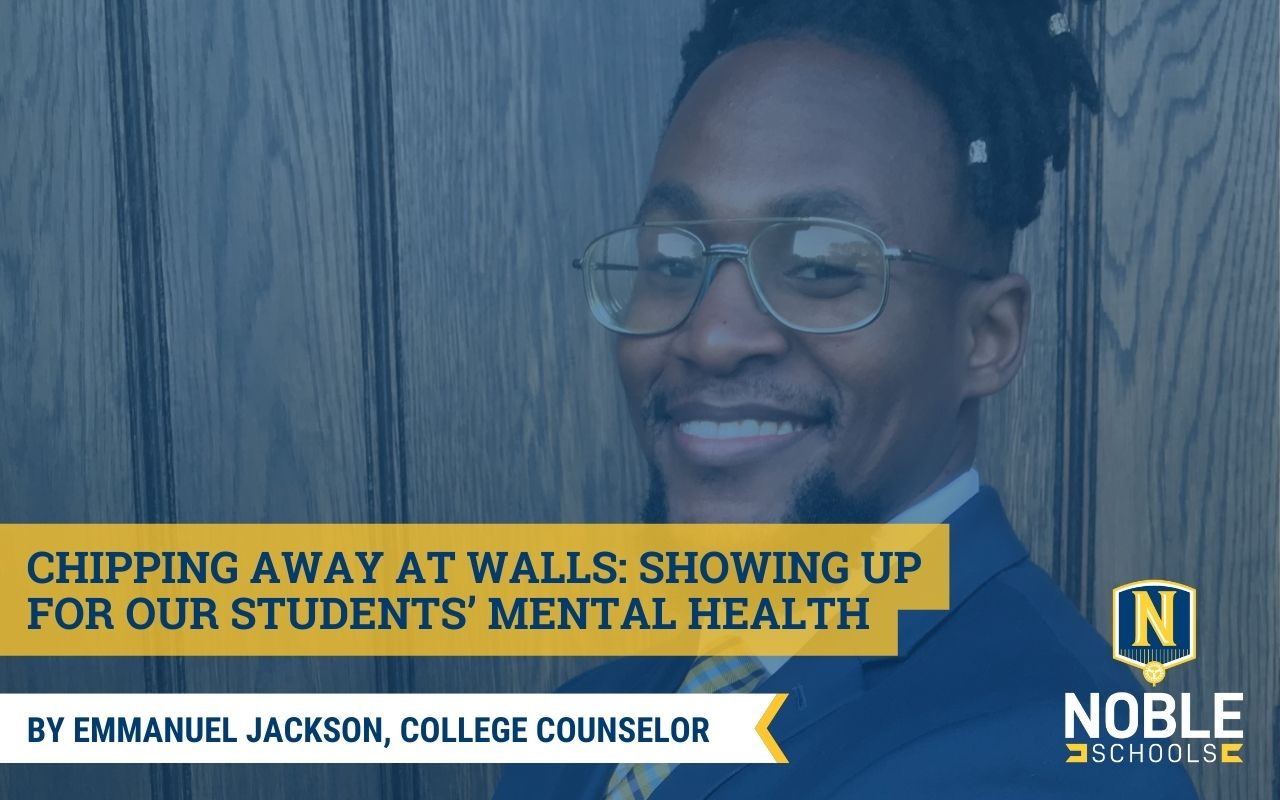
BY EMMANUEL JACKSON | he/him | College Counselor & Distinguished Teacher | Muchin College Prep
“Black people don’t go to therapy.”
“You don’t need therapy, you need Jesus.”
“Stop crying and suck it up.”
“Therapy is for crazy people.”
Throughout my life, these are phrases I’ve heard from my students and peers that sought to justify why people of color, and specifically Black people, should not seek out therapy or support. Nevertheless, support and therapy are exactly what is needed, arguably now more than ever.
Coming out of a global pandemic, the mental health of our young people has deteriorated. On top of that, many of our students here at Noble Schools deal with the extra challenges that come with being people of color in this country – the stress of witnessing police killings, a lack of access to mental health resources, the mental burden of racism, and more. For our Black and Brown boys, there’s also the additional layer of toxic masculinity that plays a role in preventing them from seeking out mental health services. Destigmatization of mental health and access to vital services like therapy are paramount and could literally be the difference between life and death for many of our young people. Therefore, we must change this negative narrative about mental health and help our students understand the importance of mental healthcare and how they can access it.
I believe one of the most important ways we can do this is for educators and adults to lead the way as role models by being vulnerable with each other and young people about our struggles. So, I’m starting off by sharing my own story and mental health journey as a Black man and educator.
laying my foundations
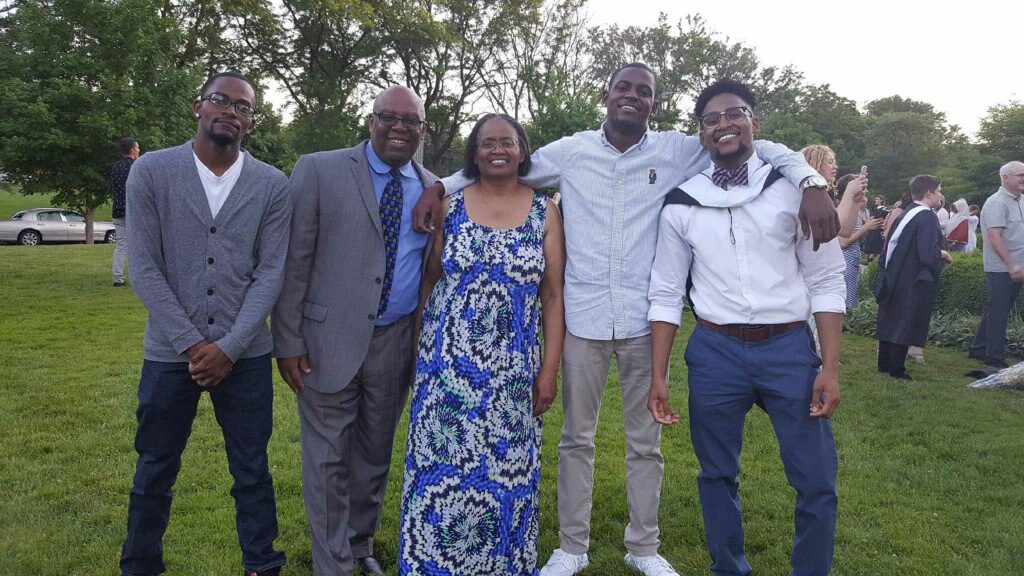
imagejpeg-2
Emmanuel Jackson, on the right, celebrates his graduation from University of Chicago with his family.
I came from a family of therapy advocates. Growing up, my parents told my brothers and I without shame that they sought out therapy multiple times throughout the course of their 33-year marriage. As an adolescent, I didn’t realize how much their openness to discuss therapy and mental health would positively impact me later in life. It allowed me to see that there was nothing wrong with seeking outside resources in order to become a better version of myself.
Throughout high school, I had several friends, but I never knew what a safe space actually looked like with someone my age until I met my best friend in the 11th grade. This relationship really helped me lay the foundation for what I wanted in all of my friendships moving forward. In my relationship with him, I knew I had a true support system, unlike anything I had ever experienced before. My bond with him gave me the space to be open and honest in a way I never thought I could and provided me with a safe place to process and essentially practice positive self care. The depth of this relationship led me to desire similar relationships with other guys.
Post-secondary struggles
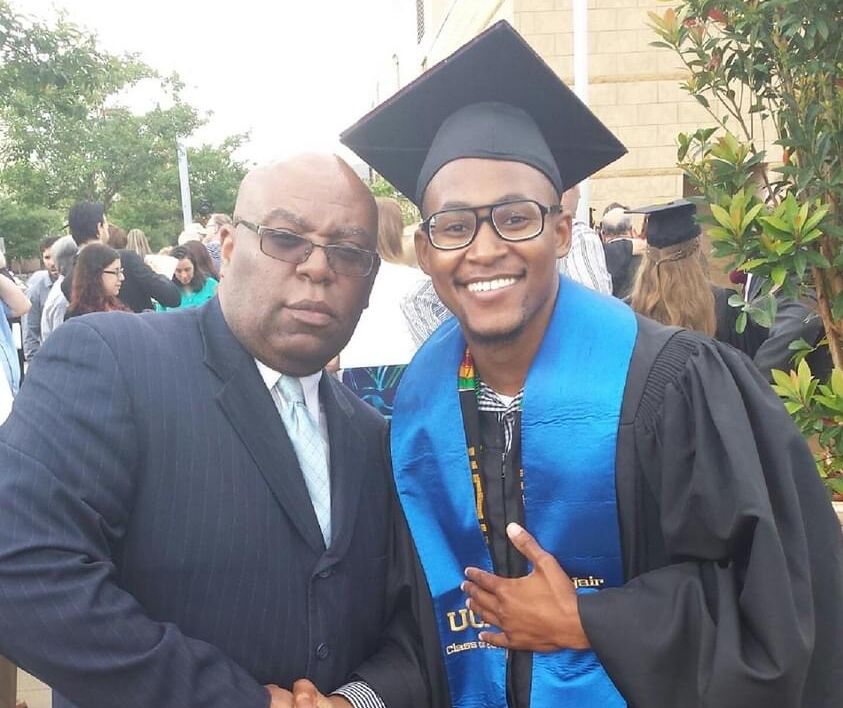
IMG-1097
Emmanuel poses with his father after graduating from the University of Central Florida.
By the time I started my post-secondary studies at the University of Central Florida, I was eager to expand my support system in order to develop relationships with other guys who could push, challenge, and support me. My intentionality helped me find what I was looking for. Throughout college, my mind was stretched in ways I could have never imagined. My ability to cry, be vulnerable, and support and be supported by other young men was one of the indelible aspects of my college experience. I was thriving and had accomplished everything and more than what I set out to do while in college. Little did I know, heading to graduate school would challenge me unlike ever before.
I attended graduate school at the University of Chicago through their school of social work. Although I attended a PWI (predominantly white institute) during my undergraduate program, it had been much larger, so going to a small, private university like UChicago was a culture shock. I experienced immense imposter syndrome, and I felt as if I didn’t belong. I didn’t feel as smart as the other students at the school – I was sitting in classrooms with people who were valedictorians of their high school, many of them were born into wealth. The knowledge they possessed made them seem light-years ahead of me.
I was also one of the few Black people in my graduate school cohort that year. This made me feel isolated and, although I grew up in diverse communities, I wasn’t used to being in such a white environment. As a result, I was intentional about not giving into stereotypes typically associated with Black people, such as being late. Outside of the small friend circle I had, mostly composed of other Black students, I kept to myself. At the same time, while not fitting in at the school, my internship, located in a predominantly Black community in Chicago, made me feel conspicuous and out of place. To this day, I’m not sure what specifically made me feel this way, but it made me self-conscious and alone. I was having an identity crisis and I felt like I didn’t fit in anywhere.
To make matters worse, I had no family in Chicago and the demands of graduate school were intense. I eventually stopped attending classes I felt were too hard for me. Doing this only led me to feel like a failure and made me believe that I was going to let my family down. Yet, I allowed myself to suffer in silence because I wanted to put on this facade to my friends and family that I was okay. However, doing this led me to hit the lowest point in my life. I stopped pouring into myself spiritually. I wasn’t working out like I used to. At one point, I vividly remember sitting in my room, after having skipped yet another class, and thinking to myself, “I’d rather quit this and be homeless.” I stayed in this semi-depressed state for three months.
It wasn’t until one of my TA’s, a Black man, reached out to check in on me that I began to turn things around. His class was one of the ones I’d been missing regularly, and he offered me the support that I desperately needed yet struggled to convey. His guidance and investment in me helped me to get back on the right track and gave me a renewed sense of purpose. He helped me remember my why. Although I still struggled in several classes throughout my time in graduate school, I did just enough to cross the stage.

imagejpeg-1
Emmanuel celebrating as he graduates from the University of Chicago.
getting to therapy
A few years later, I had more interpersonal struggles. Around this same time I met a guy who I instantly connected with and who reminded me of my best friend from high school. He was genuine, transparent and authentic. In one of our conversations, he mentioned he was seeing a therapist. Even though I was open to therapy, I didn’t actually know how to go about seeking one out.
My friend suggested that I reach out to his therapist as, based on my personality, it could be a good fit. It took me a few months to actually put his suggestion into action, but I eventually did. It has been one of the most consequential decisions I’ve ever made. I was in therapy for two years. During that time, I was challenged to think in ways I never had. It forced me to truly self-reflect on the person I was and make tangible steps to become the person I wanted to be. Having someone willing to listen to me and challenge my notions was exactly what I needed and has helped me to grow into the person I am today. Even though I’m not the person I want to be, I know I am a better person than I was.
The progress that I’ve been able to make doing my self-work is what I want for our Black students. Many of them are already doing the work but there is more work to be done. In order to help them keep doing the work, our students, above anything else, need to know that it’s okay NOT to be okay. As people, we never truly have everything figured out 100% of the time. Our students need to know that not feeling okay doesn’t make them abnormal…it makes them human.
importance of support systems
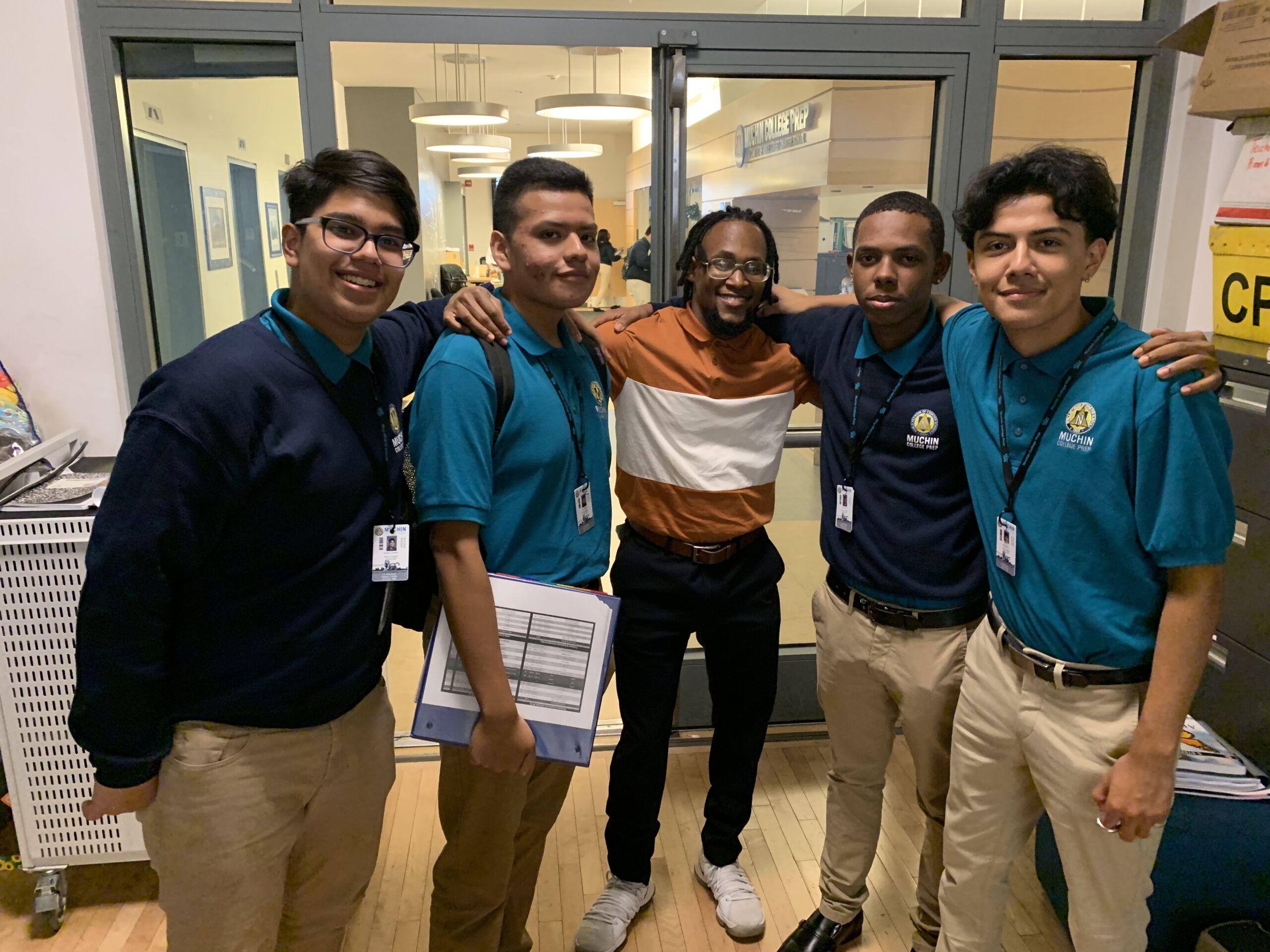
IMG-0721
Emmanuel poses with a few of his advisory students.
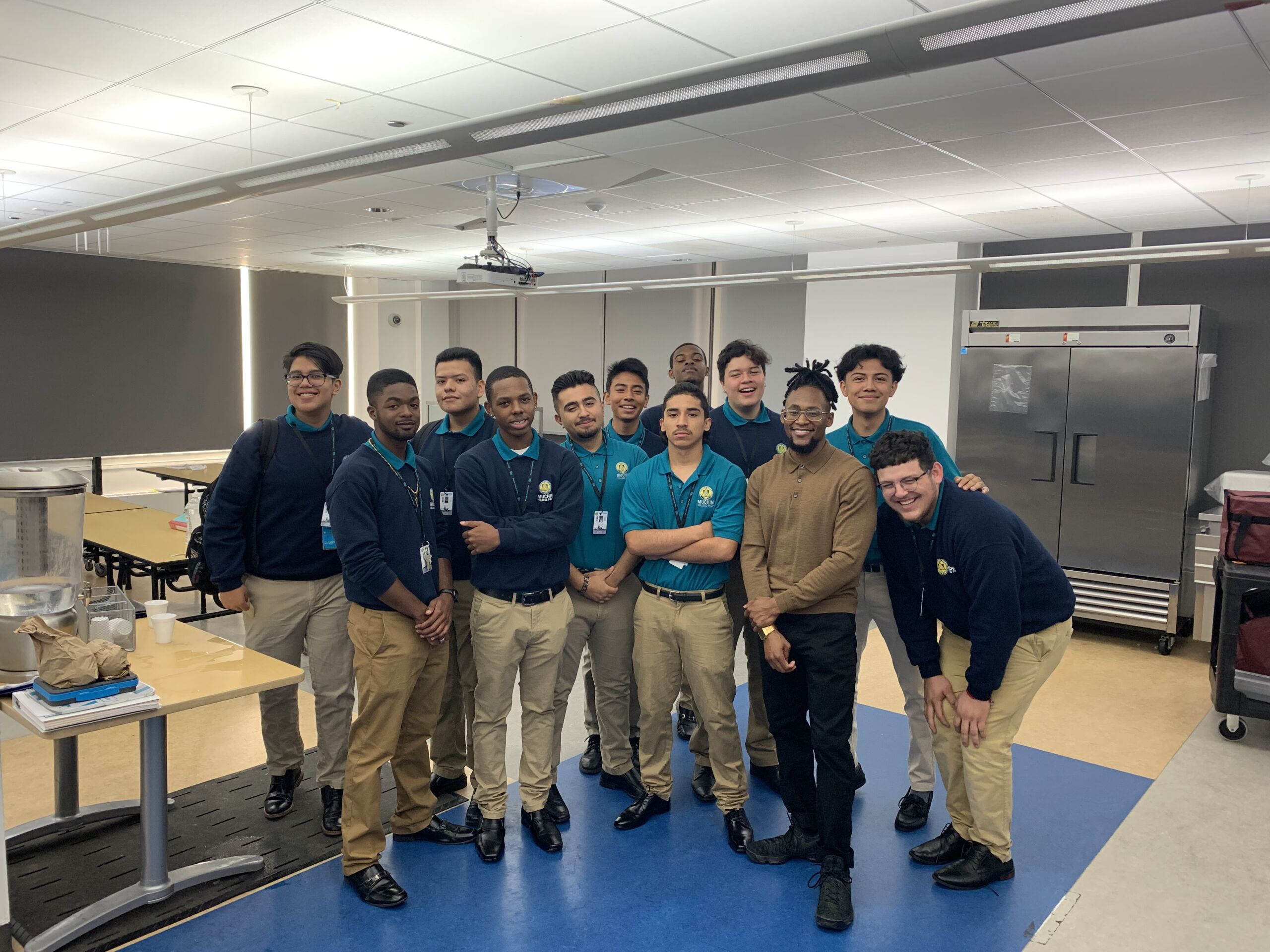
IMG-0737
Emmanuel with his entire advisory.
My job as an educator is to ensure my students are supported to the best of my ability. That includes helping them understand that going to therapy and talking about one’s feelings can lead to positive outcomes over time – if they’re willing to do the challenging self-work. I’m vulnerable with my students about some of my challenges and openly discuss my experiences with therapy to show them an example of how we don’t have to have everything figured out and we all need help at varying points in our lives.
Despite what society often tells us about pulling ourselves by our own bootstraps, each one of us needs support. It’s imperative to have an emotional safety net to help us cope with the stressors of life, particularly in healthy ways. Our students often internalize the messaging that being “strong” consists of portraying minimal, if any, emotion at all. From my experience, this has caused many students to become emotionally unavailable and unwilling to seek out support. Some students also don’t seek out help due to trust issues from their past experiences.
Our job as educators, parents, and any adult who works with kids is to be intentional about chipping away at any walls they may have up, brick by brick. We do this by checking in on them and letting them know we care. This clip of popular rapper Phor getting support from his loved ones is a great example of the support I envision each of our students having. It won’t happen overnight, but if we can consistently show up for our students in this way, my hope is that we can work in partnership with them to provide this type of love.
Accessibility to resources
Finally, because we cannot always do everything on our own, our students need access to mental health resources. We need more organizations that uplift our communities and provide the help that our communities need to thrive, especially for our young people. Currently, when I think of organizations that I see doing this work for our students, I think of CHAMPS Mentoring, The CornerStore Chicago, and Becoming a Man. It’s my firm belief that we need more funding and accessibility of organizations such as these so our students can get connected to mentors and support systems that will help them navigate life’s challenges and who will walk beside them as they become the people they were created to be.
So, to my fellow educators, parents, and allies: I implore you to keep fighting for our Black and Brown students and their mental health. They need US. They’re depending on US. We CANNOT let them down.
If you’re looking for some local mental healthcare resources for your students and families, check out NAMI Chicago’s Resources page here.

